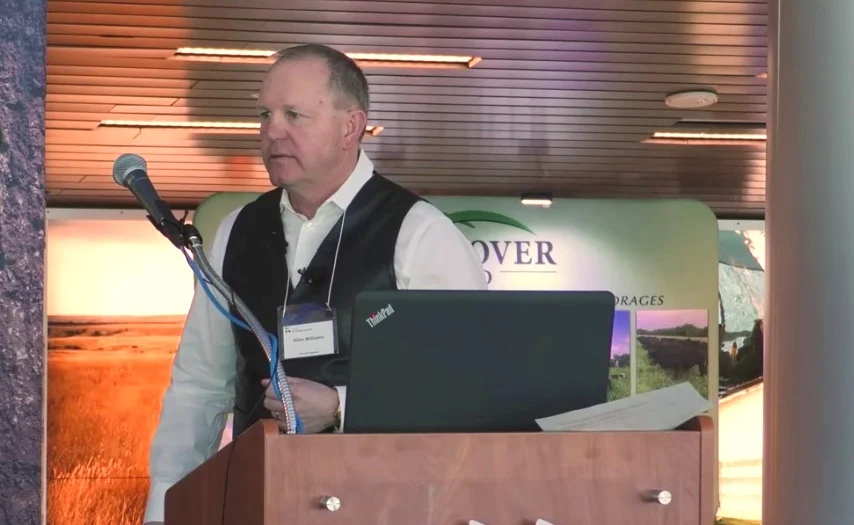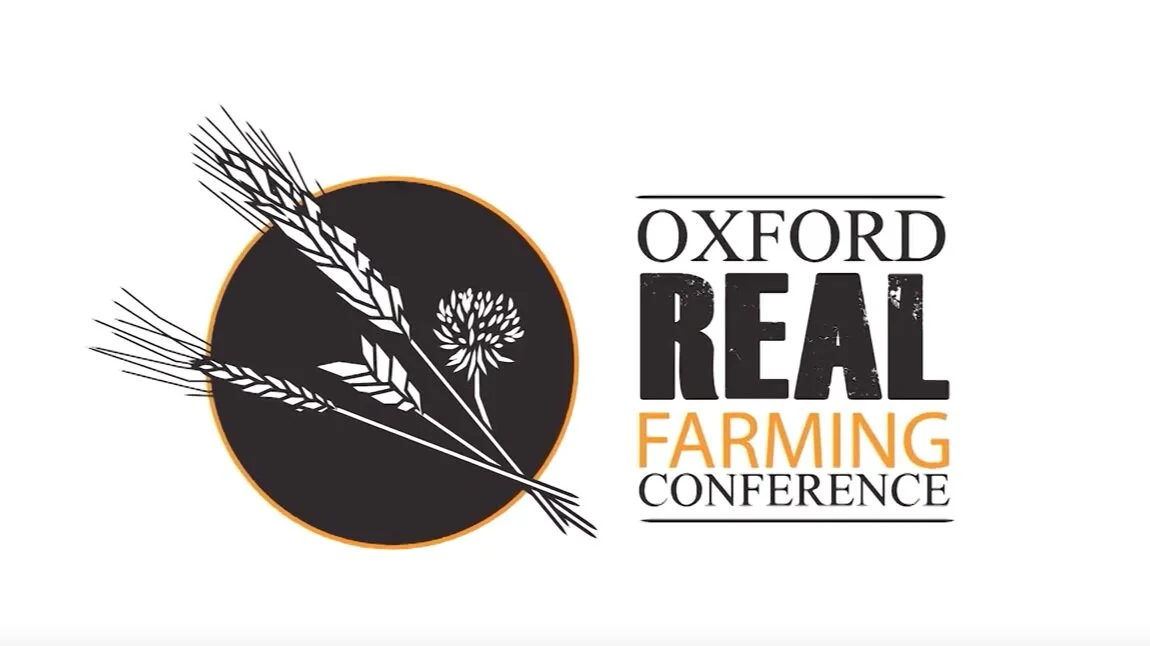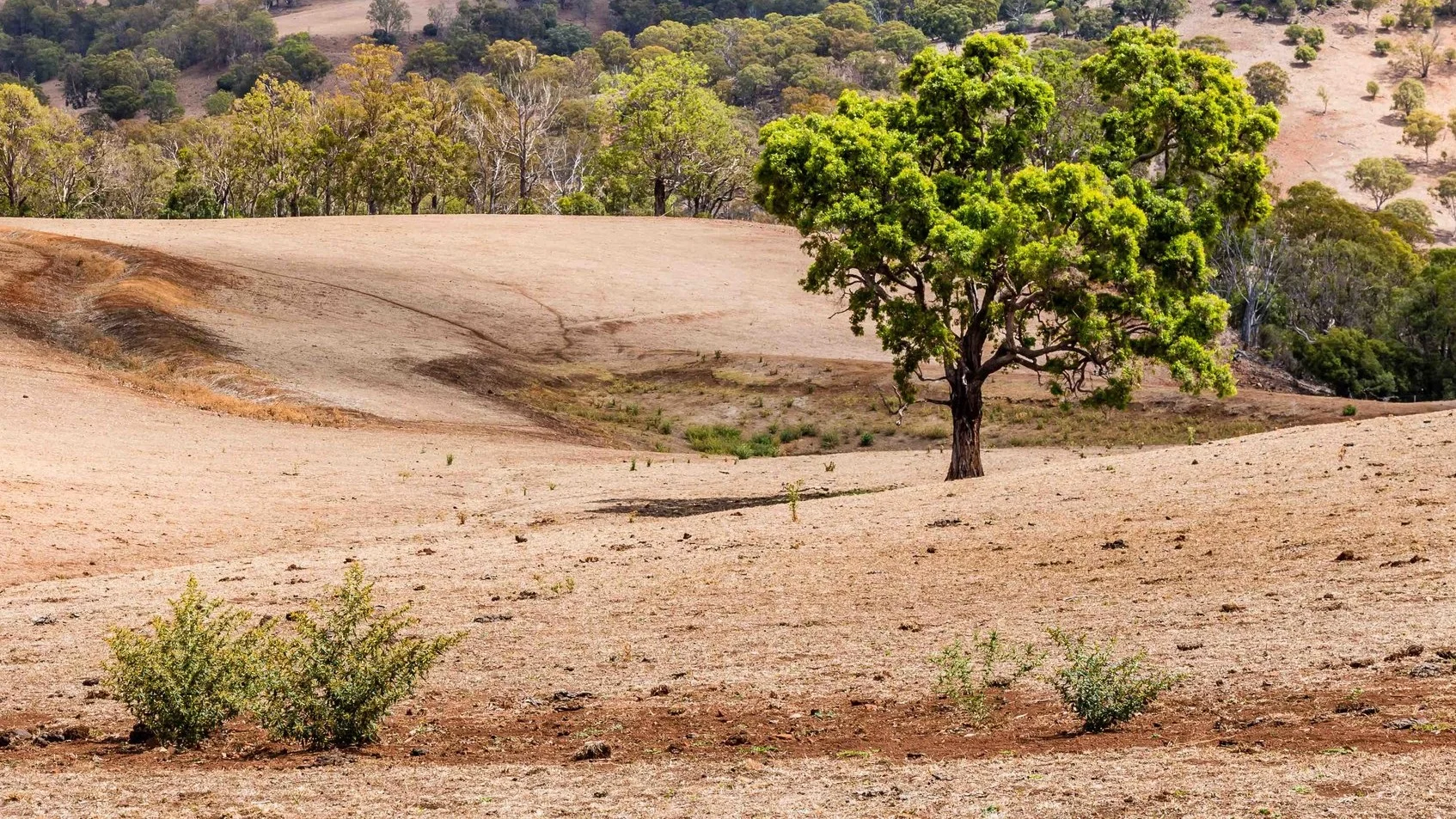At a recent British conference, Adam Henderson who is a long time BBC broadcaster for the popular farming tv show Countryfile, told conference goers that overworked and underpaid farmers need to become more business minded. Countryfile is the British counterpart of the ABC’s Landline. Adam said:
“You need to have base standards in what you believe in and try stick to them. Millennials are demanding much more from businesses about ethics and animal welfare.”
"The next generation of farmers need to be entrepreneurial, innovative, hard working, technological and they have to be business minded.”
The way for farmers to ditch the ‘underpaid whinging image’ is to learn how to produce the food consumers will love, and create channels that sells it directly to them. This advice, from an experienced farmer in the industry, who can see from a larger perspective, is all good. However, when farmers don’t have all the information they need to succeed, they probably won’t. Many Australian farmers are now at the mandatory change crossroad due to the drought. Where do they go for the tools to succeed? Finding valuable advice in the Australian farming sector is challenging, because there are many advisors who will happily steer farmers towards expensive inputs or gimmicks. Many farmers exist on razor-thin-margins and are crying out for help. They flock to conferences and field days seeking solutions and often don’t find them.
Farmers need three things: they need to learn basic soil health principles, learn from other successful farmers, and learn discernment.
Farmers have to learn to weigh the value of the advice they can find for free on the internet, against paying someone who says he/she is an expert. The way to cultivate this discernment, is to do some investigation as a form of self empowerment. Articles like this one, about Australian regenerative farmers Steve Marsh and Charlie Arnott are driving farmers to seek the information presented in this article. Why is evidence showing regenerative farmers enjoy more success?
In addition, pasture-raised foods (beef, poultry, pork, dairy and wild-caught fish) are becoming increasingly sought after. So much so, that farmers who produce 100% pasture-raised animal products, like British raw dairy farmer Christine Page, report an increase in ex-vegans calling her up. She says these ex-vegans want to become her customers, and are seeking her animal products due health problems, malnutrition and nutrient-deficiencies. This trend is noticed by others as well. Hardly a month goes by without a story about a prominent vegan influencer’s health falling apart, and them adopting animal foods into the diet. We are experiencing a farming and consumer values revolution.
There is an urgent need for farmers to learn how to grow quality, and quantity forage on the farm to produce nutrient-dense animal products.
Farmers need to learn from other farmers who excel at producing/selling these products, about what inspires consumers to open up their wallets with enthusiasm.
Farmers need to seek farmer educators who have the expertise to pass on the right kind of information, because not all regenerative farmers are good teachers. This is very important to acknowledge.
Introducing Dr Allen Williams - academic, farmer, educator and businessman
Image: Dr Allen Williams from the new documentary series Farmer’s Footprint.
Dr Allen Williams PhD is an American academic and also a 6th generation family farmer. He provides farmers with the tools and resources they need to expand on regenerative farming methods, often for free. He has a very impressive CV. He calls himself a "recovering academic," having served fifteen years on the faculty at Louisiana Tech University and Mississippi State University. He holds a BS and MS in Animal Science from Clemson University and a Ph.D. in Livestock Genetics from LSU. He has consulted with more than 4,200 farmers and ranchers in the America's on operations ranging from a few acres to over 1 million acres. Allen pioneered many of the early adaptive grazing protocols and has spent the last fifteen years refining those. He has authored more than 400 scientific and popular press articles, and is a celebrated speaker. A google search reveals many videos and articles about his work and diverse project involvement. Allen’s major areas of research and business focus include soil health, cover crop/livestock integration, adaptive forage and grazing management, high attribute pasture-based meat production, and alternative marketing systems. Allen and his colleagues specialise in whole farm and ranch planning based on the concept of regenerative agriculture. Their approach creates significant "value add" and prepares the landowner for multiple enterprise/revenue stream opportunities that stack enterprises and acres. This approach allows for enhanced profitability and/or investment value. Watch a snippet below from a recent documentary series called Farmer’s Footprint that features him:
Allen’s life has been a winding path of diverse experiences. After earning his Ph.D. and working as a professor, he was immersed in commodity and conventional agriculture, as most were at the time, but after years steeped in university research he noticed problems with the commodity agriculture system. He saw livestock health decline with high input use, and compared it to the health of the animals on his family farm where they did not use any fertiliser. He saw band-aid approaches, like antibiotic inputs, not working. Product after product were not really fixing anything in the broader scheme of things.
“Academics spend a lot of time viewing objects in isolation. They also spend a lot of time isolating themselves from the whole.”
Allen says that academics and researchers must reorient themselves, and quit looking at individual things, while “ignoring a gushing wound.” He says they need to stop addressing only symptoms, instead of the root cause. The real problems need to be solved and looked at holistically.
“An object seen in isolation from the whole is not the real thing” - Masanubo Fukuoka
Allen says that one of his biggest motivations is “encountering farmer after farmer who, with tears in their eyes, admits that no one has ever told them about the soil biology or about how terribly they’ve been treating it.” Farmers don’t want to lose their farms. They know they cannot carry on business as usual.
Definitions on regenerative farming are important
Today some organisations have vague definitions on regenerative agriculture, but not Allen. He knows exactly what makes regenerating methods and the food they produce superior in quality.
As a scientist and educator he can describe all the verifiable details regarding soil health differences, and as a successful farmer and businessman he can help anyone understand the dynamics behind farming in a highly profitable way that consumers love and value.
The animal products produced in regenerative farming systems takes grass-fed and pasture-raised to a whole different level. The following is a very brief description of basic soil health principles:
Soil Health
It recognises that soil microbes are our companions in restoring and maintaining soil health, animal health, human health and environmental health. Soil must be alive with microbes because they create the structure in the topsoil with channels that allow more water and oxygen in, which results in less runoff. These microbes also work in symbiosis with plants to extract minerals from soil, make them bioavailable to the plants, which help plants grow strong and healthy. Soil doesn’t work when there are no microbes. Careful management encourages the right ones to grow in number and diversity. Microbes and their houses (soil aggregates) increases drought-resistance, faster water infiltration rates, keeps the water in the soil and slows evaporation, increases nutrient-cycling (between plants and microbes) resulting in healthier plants and animals etc. The soil needs a variety of the right kinds of microbes, like bacteria, nematodes, fungi, protozoa etc. for good health and good plant health.
Diverse species plants and cover crops
How farmers manage plants and plant diversity are critical to restoring and maintaining microbial health of the soil. This enables the ecosystem to thrive. Growing diversity and adding cover crops increases microbes and more organic matter, allowing it to draw in more carbon and nitrogen. A dense cover protects the soil against heat or cold extremes, prevents moisture evaporation, and it makes the paddocks less fire-prone because they are green and hydrated. Variety add flavour and makes more variety nutrients available to plants. Allen says that we want highly diverse and complex pastures and annual mixes - not monocultures. Functional groups include grasses, legumes and forbs are needed for ecosystems to work and thrive. Dairy farmers also report the cows produce more milk, and higher quality milk, when grazing these pastures.
No disturbance of the soil or tilling
Established mycelial networks function (like mycorrhizal fungi), but when the structure of the soil (called aggregates) is tilled or disrupted, it decreases water infiltration, reduces organic matter, increases weeds and releases CO2 into the atmosphere. Tilling rips up and compacts soil, compressing the air pockets (the soil aggregate channels) that enables healthy soil function.
No chemical inputs
When farmers use fertilisers, herbicides, fungicides and pesticides, they disrupt the protective mycelial (fungal) network and also kill off larger populations of beneficial species (like bees). Allen says that mycorrhizal fungi are the ‘immune system’ that protects plants roots against fungal disease, therefore using fungicide is counterproductive.
Livestock integration
Adaptive grazing is a form of biomimicry that stimulates the way nature functions. Dense herds of grazing ruminant animals are managed. They ‘roam’ the pastures by grazing and trampling the paddock, and are then removed. The period afterwards allows the nutrient-cycle to kickstart, feeding soil microbes, which stimulates rapid regeneration of the plants and soil.
Adaptive grazing
Rotational grazing large pastures that are subdivided into smaller paddocks with sufficient feed for a day or so, allows nature to recreate the ecosystem that existed before modern agriculture. Animals don’t get to overgraze their favourite plant species in a paddock. Native grass species and diversity return. Cattle are introduced to a new paddock of knee-high pasture every day or so, allowing them to eat and trample the plant life, leave, and then giving the paddock a good rest. This can also increase carrying capacity significantly. Read this article on Adaptive grazing.
The outcomes of regenerative agriculture systems have much broader implications that benefits farms, the environment, the food and our health, than just marketing animal products as grass-fed or pasture-raised. It builds soil health, enhances ecosystem diversity, enhances animal welfare, captures carbon and nitrogen from the atmosphere and restores farm profitability, to name a few. To learn more about Joyce Farms’ definitions on regenerative agriculture, read this page.
Soil Health Conference 2019
Dr Allen Williams recently presented at the 2019 Soil Health Conference in South Dakota. He and his partners educate around North America on regenerative practices, rebuilding and restoring ecosystems. However, underneath this they also teach the ability to properly steward all that farmers and ranchers have been blessed with. Allen says the responsibility lies very deep, which is why he and others have been very proactive in teaching other farmers these principles so they can be replicated.
In the video below, he first introduces his partners in the Soil Health Academy: Gabe Brown, Ray Archuleta and David Brett. Allen is also a partner in a seperate meat and poultry company called Joyce Farms in North Carolina producing pastured animal products “from Boston down to Florida, and as far west as Saint Louis”. In the video he demonstrates how healthy, pastured animal products can be very successfully farmed on large scale (or any scale). Joyce Farms’
predominant target market is restaurants. Allen says that not everyone wants CHEAP FOOD, which is a myth that many farmers seem to believe. Some consumers want grass-fed/pastured beef, pig, chicken etc. and “they will pay for true verifiable value”. Joyce Farms has its own processing plant that processes poultry, beef, pork, lamb, bison etc. They have initiated a huge rural revival showing that consumers want transparency and education. In the video Allen describes how he takes chefs, restauranteurs, and consumers on farm tours and explains to them the benefits of healthy soil on food. These guests are treated to a mini lesson on soil health right there in the paddock. They are shown what soil aggregates look like, and what healthy microbe-rich soil smells like, as they dig in the soil. The truth of the science-based information immediately resonates with them, which is very powerful. This is what farmers need to learn to do, because consumers hold the purse strings. Watch the video below:
Video: This session was recorded at the 2019 Soil Health Conference & Annual Meeting, on the campus of SDSU in Brookings, South Dakota, US. The conference was sponsored by many exhibitors and sponsors. This video recording was made possible through an agreement between the SDSHC and USDA-Natural Resources Conservation Service, under agreement 68-6740-17-010. Creative commons attribution license (reuse allowed).
Consumers are becoming very educated on the quality of their food due to their health problems. They are able to observe when farmers grow predominantly monocultures in the paddocks, instead of multi-species, and they will ask about chemical use and recognise when the farmer doesn’t understand how soil functions. They will observe when farmers are allowing their pastures to be overgrazed (reducing plant diversity and with it plant and product nutrient value), or when they are not practising a good rotation and paddock rest. Some consumers are willing to fork out quite a bit of money for better practices that translates to higher nutrient quality food, but they want some assurances and proof of quality in return.
This article is not about bashing farmers about how they farm, or hurting their feelings. Please do not misunderstand the purpose of this information. It is about attempting to clearly communicate that consumer preferences are changing, and like Allen’s farm, there are huge opportunities for farmers to capitalise on, if they are open to learning…
At the 13 minute time marker of the video, Allen lists the variety of enterprises that can arise on a farm, like timber, woodland grazing, organic vegetables, specialty/heritage breed plants and animals etc. Allen also lists the variety of programs and events that are hosted on their farms: internships, apprentices, on-farm business incubators, farm day events and soil health educational events.
Free resources that provides workable solutions
At the 19 minute time marker of the video, Allen provides links to the kinds of in depth information that farmers will need if they want to understand the dynamics behind some regenerative farming practices. These videos contain footage from different farms that Allen and his colleagues have consulted with over the years. Farmers sometimes do things a little differently, and that is fine, as long as they learn to understand the principles on soil health that creates abundant farm productivity and prosperity:
Soil Carbon Cowboys website now has 10 videos in their series, watch them all here or see the individual videos below:
Soil Carbon Cowboys - (first video 12 minutes)
Soil Carbon Curious - (6 minutes)
One Hundred Thousand Beating Hearts - (12 minutes)
The Luckiest Places on Earth - (25 minutes)
A fence and an Owner - ( 9 minutes)
During the Drought - (12 minutes)
I sell water and sunshine - (13 minutes)
Givers and Takers - (9 minutes)
Herd Impact - (23 minutes)
Time will tell - (12 minutes)
Soil Health Academy www.soilhealthacademy.org with blogs, videos, recommended reading and monthly Q & A sessions with people dialling in from all over the world.
Pasture Project www.pastureproject.org provides How-To videos (42 video series of short films) on topics like cover crops and adaptive grazing, decision calculators, webinar & presentations and research trial results.
Grass Fed Exchange www.grassfedexchange.com
Kiss the Ground - A Regenerative Secret film
Farmers Footprint multiple short films with Dr Zach Bush - Renegeration: The Beginning
Nourishment by Dr Fred Provenza
Reflections on feeding body and spirit in a world of change
At the 33 minute time marker, Allen begins to discuss the work of Dr Fred Provenza. Allen says that a high diversity of plants produce different nutritive compounds that are highly medicinal to other plants and livestock, and many also produce anti-parasitic compounds. When animals have diversity to feed on, they are literally ‘de-worming’ themselves in the process of grazing. In the book, these benefits also translates to better human health as well, as we enjoy animal products in our diet.
Fred Provenza has had a long and fruitful career and is currently professor emeritus of Behavioural Ecology in the Department of Wildland Resources at Utah State University. He has directed an award-winning research group that pioneered an understanding of how learning influences foraging behaviour, and how behaviour links soils and plants with herbivores and humans.
Animal scientists have long considered domestic livestock to be too dumb to know how to eat right, but the lifetime research of animal behaviourist Fred Provenza and his colleagues has debunked this myth.
Their work shows that when given a choice of natural foods, livestock have an astoundingly refined palate, nibbling through the day on as many as fifty kinds of grasses, forbs, and shrubs to meet their nutritional needs with remarkable precision.
In Nourishment, the author presents his thesis of the wisdom body, a wisdom that links flavour-feedback relationships at a cellular level with biochemically rich foods to meet the body’s nutritional and medicinal needs. He explores the fascinating complexity of these relationships as he raises and answers thought-provoking questions about what we can learn from animals about nutritional wisdom.
Dairy pastures perennial mix
At the 35 minute time marker, Allen talks about working with many grass-fed dairy farmers on improving their pasture diversity with different perennial mixes, by adding these to permanent pastures. Allen says there should be legumes, forbs and grasses present in perennial pastures, as well as warm season annuals and cool seasons annuals. The following is just a simple example of the recommendations made in America for grass-fed dairies, which also includes what many consider as a weed. There are many weeds that cattle love to eat:
Bromegrass, Orchardgrass, Meadow Fescue, Tall Fescue, Bluegrass, Reeds Canary, Timothy, natives…
White Clover, Red Clover, Trefoil, Hairy vetch, Milk vetch, lespedezas, Sweet Clover, Tick Clover, Alfalfa, Sainfoin…
Chicory, Plantains (Narrow and Broadleaf), Yarrow, Sheep’s parsley, Burette, Dandelion, Docks…
Examples of adaptive stewardship in practice
At the 47 time marker, Allen delves into a couple of extreme condition examples of adaptive stewardship in real life. They clearly show the power and resilience of nature, and the ability of nature to take challenges and still be able to produce something profoundly positive, that benefits everybody.
Dark Branch Farm
Adam Grady from Kenansville, North Carolina raises pastured beef and pork. He uses cover crops, and thanks to functional soil aggregates and soil biology, he was able to deal with the flood waters of hurricane Florence in September 2018 much better than his neighbours in their fields. Listen to the video for the story. Adam has been using cover crops for only two years, but slides show that in just 1.5 years he was able to add 3 inches of new, darker coloured topsoil to the normally sandy soils of the area.
Chihuahuan Desert, Mexico
Allen and his colleagues are doing a lot of educational work in this desert. They are now actively “greening” it. The area receives less that 8 inches of rain annually, with a short rainy season and a long dry season. The temperatures can reach 105’F and most ranches require 300+ acres per cow. He shows images and describes how a desert can be transformed into thriving grassland with particular management. The results show these ranchers have reduced the acres required per cow from 300+ to 30-40 acres. The ranchers are producing significant more pounds of beef per acre, and their net profits have increased more than 3 times.
Final words…
At the 40 minute time marker, Allen encourages farmers to understand that observation is the best tool in the toolbox. Constant observation develops intuition, and on a day to day basis decision-making will grow stronger, because farmers will better understand the holistic system.
This holistic view is incredibly important for dairy farmers who want to produce raw milk for human consumption. Animal health is a vital factor in the food safety of raw drinking milk. The importance of dairy farmers learning about how regenerative farming methods can significantly increase both animal health, and the food safety of raw drinking milk, cannot be overstated. More about this in the Farm Conditions and Cow Health categories of the Risk Identification and Risk Reduction Program.
Australia is a very risk-averse country, and anything that can significantly increase the food safety of raw milk from cows, like regenerating farming methods, are worth highlighting, despite the intellectual challenge of learning the basic principles.
Hopefully articles like this one, can inspire Australian dairy farmers to open their eyes to new wisdom, instead of staying stuck with the status quo who tend to recommend expensive inputs, without teaching farmers the basic principles in understanding they really need. Farmers can save a lot of money, and make a lot of money, as many regenerating examples around the world demonstrate. In Australia, farmers are increasingly networking with each other at conferences and field days. New farmer educators are emerging, however, few present the essential facts as succinctly as Allen does.
Would you rather learn from the free resources made available from successful farmers like Dr Allen Williams, or would you pay a so-called expert in your local area who may promise you results, but may not be able to produce the same kind of extraordinary results? Please take the time to educate yourselves, because consumers, livestock and the environment need farmers to wake up fast to the benefits. We need farmers to be of valuable service to the health and wellbeing of the whole, as it was always meant to be.
Related Articles:
How Wyoming is Using Blockchain to Ensure Ranchers Get Price Premiums for Sustainably-Raised Beef
'Farmers need to ditch the 'underpaid whinging image'- BBC star tells Dublin conference
FARMER CANCER': U.S. GROUNDSKEEPER SUED ROUNDUP MANUFACTURER FOR MILLIONS. CAN AUS FARMERS SUE TOO?
For Williams, Soil Health is Definitely Cool Again
No-Till Farmers’ Push for Healthy Soils Ignites a Movement in the Plains
Yes, eating meat affects the environment, but cows are not killing the climate
Conversations , Regenerative Agriculture Colin Seis interview
Christine Page - Smiling Tree Farm, south Shropshire
Tall Grass Grazing and the Future of Livestock Farming
Food safety: Dung beetles and soil bacteria reduce risk of human pathogens
Vegan YouTuber Fail Leaderboard
The Weird World of Vegan YouTube Stars Is Imploding
Instagram vegan diets are risking malnutrition among millennials, Harley Street nutritionists warn
Excessive phosphate fertilizer use can reduce microbial functions critical to crop health
Glyphosate use in the spotlight at Wodonga
Australia's east coast named as 'deforestation front' in WWF Living Planet report
Australian cattle exported to Sri Lanka dying and malnourished, local farmers left suicidal
























